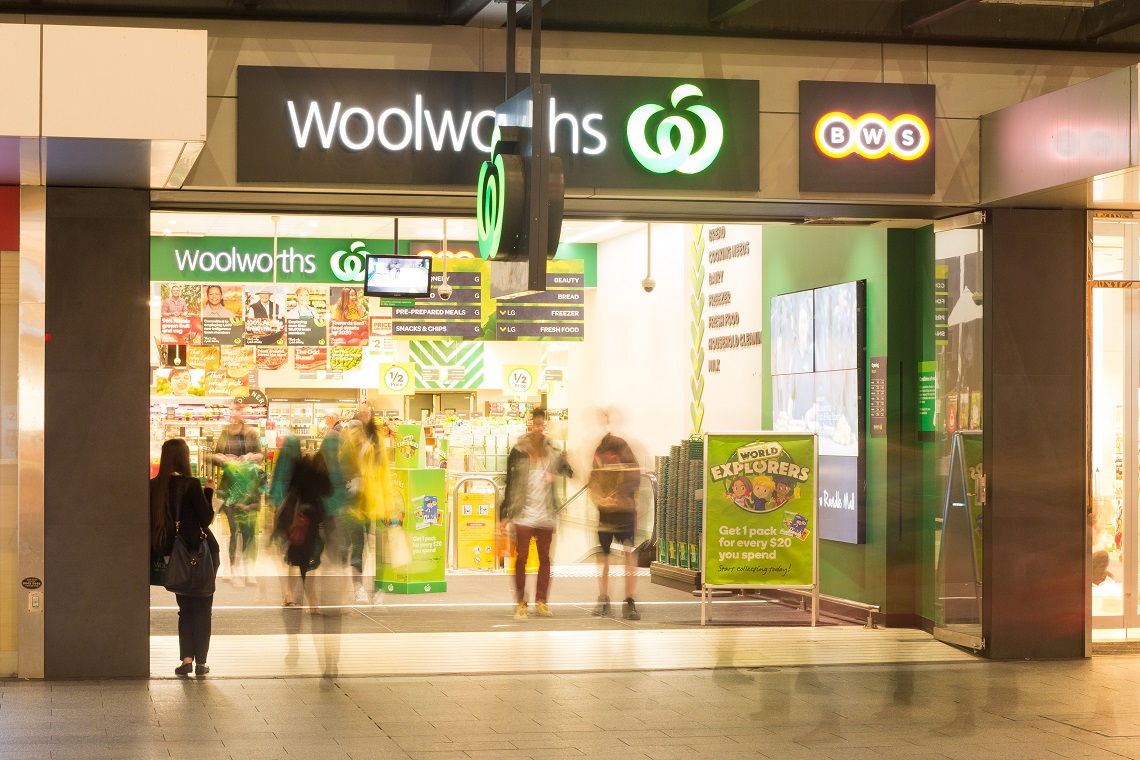Brand Finance has released its 2021 Australia 100 Report, which ranks the country’s top 100 brands, and this year the retail sector has overtaken banking in terms of overall brand value, accounting for 25 per cent of total brand value.
For the second year running Woolworths is ranked as Australia’s most valuable brand, with its brand value up six per cent to $12.6bn, while competitor Coles moved up one place to fourth with a brand value of $7.9bn, up four per cent on last year.
Brand Finance said that both supermarket brands played an important part in supporting the economy during a difficult year defined by the pandemic, continuing to provide food and other essential items during lockdowns.
As the region’s top performing brands by brand value growth, Woolworths and Coles have contributed to the overall three per cent growth of the Australian retail sector, which took it past banking, which suffered an 11 per cent drop in overall brand value. Of the 17 retail brands in the Brand Finance Australia 100 2021 ranking, 11 have remained steady or recorded brand value growth.
Mark Crowe, Managing Director, Brand Finance Australia, said: “Despite the precarious financial conditions created by the pandemic, the Australian retail sector has benefitted considerably from the boom in spending on essential items such as food, medicine, and other household goods.
“While strong Australian supermarket brands such as Woolworths and Coles have been instrumental in driving up this brand value, the sector is not void of vulnerability to disruption, especially from tech-led challengers.”
In terms of alcohol brand values, XXXX was the highest ranked brand, coming in as the 32nd most valuable brand in Australia, ahead of Foster’s (49), Lindeman’s (60), Beringer (68), Yellow Tail (79), Jacob’s Creek (81), Wolf Blass (89) and Penfolds (90).
Liquorland was the only liquor retailer listed in the top 100, coming in as Australia’s 78th most valuable brand.
Crowe added: “What is the purpose of a strong brand: to attract customers, to build loyalty, to motivate staff? All true, but for a commercial brand at least, the first answer must always be ‘to make money’.
“Huge investments are made in the design, launch, and ongoing promotion of brands. Given their potential financial value, this makes sense. Unfortunately, most organisations fail to go beyond that, missing huge opportunities to effectively make use of what are often their most important assets.
“Monitoring of brand performance should be the next step, but is often sporadic. Where it does take place, it frequently lacks financial rigour and is heavily reliant on qualitative measures, poorly understood by non-marketers.
“As a result, marketing teams struggle to communicate the value of their work and boards then underestimate the significance of their brands to the business. Sceptical finance teams, unconvinced by what they perceive as marketing mumbo jumbo, may fail to agree necessary investments.
“What marketing spend there is, can end up poorly directed as marketers are left to operate with insufficient financial guidance or accountability. The end result can be a slow but steady downward spiral of poor communication, wasted resources, and a negative impact on the bottom line.”
Brand Finance compiles the list using what it calls its ‘Royalty Relief approach’, which involves estimating the likely future sales that are attributable to a brand and calculating a royalty rate that would be charged for the use of that brand. The overall brand value also includes a brand strength index and estimated brand revenues.

